 W
WThe first USS Advance was a brigantine in the United States Navy which participated in an arctic rescue expedition. Advance was built in 1847 as Augusta in New Kent County, Virginia and loaned to the Navy on 7 May 1850 by Mr. Henry Grinnell to participate in the search for Sir John Franklin's arctic expedition which had been stranded in the frozen north since 1846. After last-minute preparations, the ship, under the command of Lieutenant Edwin J. De Haven and in company with Rescue, put to sea from New York on 23 May 1850.
 W
WAntarctic was a Swedish steamship built in Drammen, Norway, in 1871. She was used on several research expeditions to the Arctic region and to Antarctica from 1898 to 1903. In 1895 the first confirmed landing on the mainland of Antarctica was made from this ship.
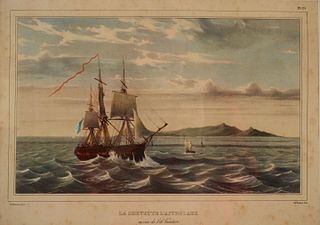 W
WAstrolabe was a converted flûte of the French Navy, famous for her travels with Jean-François de Galaup, comte de Lapérouse.
 W
WAstrolabe was a horse barge converted to an exploration ship of the French Navy and was originally named Coquille. She is famous for her travels with Jules Dumont d'Urville. The name derives from an early navigational instrument, the astrolabe, a precursor to the sextant.
 W
WSS Bear was a dual steam-powered and sailing ship built with six-inch (15.2 cm)-thick sides which had a long life in various cold-water and ice-filled environs. She was a forerunner of modern icebreakers and had a diverse service life. According to the United States Coast Guard official website, Bear is described as "probably the most famous ship in the history of the Coast Guard."
 W
WBoudeuse was a 26-gun, 12-pounder-armed sailing frigates named Boudeuse on 6 June 1765. She is most famous for being the exploration ship of Louis Antoine de Bougainville between 1766 and 1769. She also served in the American and French Revolutionary Wars, during which she captured two enemy vessels. She was broken up for firewood at Malta in early 1800.
 W
WThe caravel was a small highly-maneuverable sailing ship developed in the 15th century by the Portuguese to explore along the West African coast and into the Atlantic Ocean. The lateen sails gave it speed and the capacity for sailing windward (beating). Caravels were used by the Portuguese and Castilians for the oceanic exploration voyages during the 15th and the 16th centuries, during the Age of Discovery.
 W
WA carrack was a three- or four-masted ocean-going sailing ship that was developed in the 14th to 15th centuries in Europe, most notably in Portugal. Evolved from the single-masted cog, the carrack was first used for European trade from the Mediterranean to the Baltic and quickly found use with the newly found wealth of the trade between Europe and Africa and then the trans-Atlantic trade with the Americas. In their most advanced forms, they were used by the Portuguese for trade between Europe and Asia starting in the late 15th century, before eventually being superseded in the 17th century by the galleon, introduced in the 16th century.
 W
WCGS Alaska was a Canadian Government Ship, employed on a survey of Canada's Arctic, in the early 20th century. She was a schooner, built in Alaska, in 1912, and acquired by the Canadian Government, which employed her as part of a fleet of 6 small exploration ships from 1913–1918. She was the only ship that lasted the entire expedition. She was sold in 1918.
 W
WHMS Challenger was a steam-assisted Royal Navy Pearl-class corvette launched on 13 February 1858 at the Woolwich Dockyard. She was the flagship of the Australia Station between 1866 and 1870.
 W
WColumbia Rediviva was a privately owned American ship under the command of John Kendrick, along with Captain Robert Gray, best known for going to the Pacific Northwest for the maritime fur trade. "Rediviva" was added to her name upon a rebuilding in 1787. Since Columbia was privately owned, she did not carry the prefix designation "USS".
 W
WDeutschland, known as Bjørn between 1905 and 1909, and Osterreich between 1914 and 1917, was a Norwegian whaling and sealing ship, built in 1905. She is best known for her role as the expedition ship in the Second German Antarctic Expedition of 1911–13. During this expedition she was taken further south in the Weddell Sea than any previous vessel in those waters, but became trapped, surviving an eight-months long drift in heavy ice before being freed. After the expedition she was sold to Austria as the basis for another planned Antarctic expedition, but this was cancelled on the outbreak of the First World War in August 1914. The ship served in the Austro-Hungarian Navy as a minesweeper until 1917, when she was sunk in a torpedo attack.
 W
WThe djong, jong, or jung is a type of ancient sailing ship originating from Java that was widely used by Javanese and Malay sailors. The word was and is spelled jong in its languages of origin, the "djong" spelling being the colonial Dutch romanisation.
 W
WEndurance was the three-masted barquentine in which Sir Ernest Shackleton and a crew of 27 men and one cat sailed for the Antarctic on the 1914–1917 Imperial Trans-Antarctic Expedition. She was launched in 1912 from Sandefjord in Norway; three years later, she was crushed by pack ice and sank in the Weddell Sea off Antarctica. All of her crew survived.
 W
WThe fifth USS Enterprise, a barque-rigged screw sloop, was launched 13 June 1874 at Portsmouth Navy Yard, Kittery, Maine, US, by John W. Griffiths, a private contractor; and commissioned 16 March 1877, Commander George C. Remey in command. She was later commanded by Bowman H. McCalla around 1890, followed by Commander Albert S. Barker from 1892-1896.
 W
WThe Espérance was a Rhône-class scow of the French Navy, launched in 1781 and later reclassified as a frigate. She earned fame as one of the ships of Bruni d'Entrecasteaux's expedition. The Australian town of Esperance and Esperance Bay in Western Australia were named after her. She was sold for breaking up in 1794.
 W
WFram ("Forward") is a ship that was used in expeditions of the Arctic and Antarctic regions by the Norwegian explorers Fridtjof Nansen, Otto Sverdrup, Oscar Wisting, and Roald Amundsen between 1893 and 1912. It was designed and built by the Scottish-Norwegian shipwright Colin Archer for Fridtjof Nansen's 1893 Arctic expedition in which the plan was to freeze Fram into the Arctic ice sheet and float with it over the North Pole.
 W
WThe Galathea expeditions comprise a series of three Danish ship-based scientific research expeditions in the 19th, 20th and 21st centuries, carried out with material assistance from the Royal Danish Navy and, with regard to the second and third expeditions, under the auspices of the Danish Expedition Foundation. All three expeditions circumnavigated the world from west to east and followed similar routes.
 W
WGalleons were large, multi-decked sailing ships first used as armed cargo carriers by European states from the 16th to 18th centuries during the age of sail and were the principal vessels drafted for use as warships until the Anglo-Dutch Wars of the mid-1600s. Galleons generally carried three or more masts with a lateen fore-and-aft rig on the rear masts, were carvel built with a prominent squared off raised stern, and used square-rigged sail plans on their fore-mast and main-masts.
 W
WGauss was a ship built in Germany specially for polar exploration, named after the mathematician and physical scientist Carl Friedrich Gauss. Purchased by Canada in 1904, the vessel was renamed CGS Arctic. As Arctic, the vessel made annual trips to the Canadian Arctic until 1925. The ship's fate is disputed among the sources, but all claim that by the mid-1920s, the vessel was out of service.
 W
WGéographe was a 20-gun Serpente-class corvette of the French Navy. She was named Uranie in 1797, and renamed Galatée in 1799, still on her building site. Her builder refused to launch her, as he had not been paid to that time. Finally launched in June 1800, she was renamed Géographe on 23 August 1800.
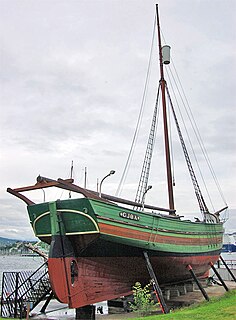 W
WGjøa was the first vessel to transit the Northwest Passage. With a crew of six, Roald Amundsen traversed the passage in a three-year journey, finishing in 1906.
 W
WJason was a Norwegian whaling vessel laid down in 1881 by Rødsverven in Sandefjord, Norway, the same shipyard which later built Ernest Shackleton's ship Endurance. The ship, financed by Christen Christensen, an entrepreneur from Sandefjord, was noted for her participation in an 1892-1893 Antarctic expedition led by Carl Anton Larsen.
 W
WUSS Jeannette was a naval exploration vessel which, commanded by George W. De Long, undertook the Jeannette expedition of 1879–1881 to the Arctic. After being trapped in the ice and drifting for almost two years, the ship and her crew of 33 were released from the ice, then trapped again, crushed and sunk some 300 nautical miles north of the Siberian coast. The entire crew survived the sinking, but eight died while sailing towards land in a small cutter. The others reached Siberia, but 12 subsequently perished in the Lena Delta, including De Long.
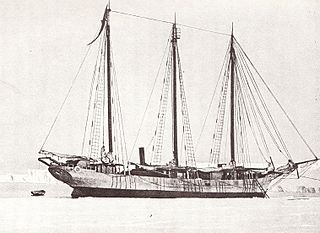 W
WKainan Maru was a converted fishing boat that was used as the expedition vessel during the Japanese Antarctic Expedition 1910–12. Substantially smaller than other expedition ships of the era, and with seriously underpowered auxiliary engines, she nevertheless completed a journey of some 50,000 km. After a false start in the southern summer of 1910–11, she entered the Ross Sea in January 1912 and landed a party on the Great Ice Barrier. While this party engaged in a southern march, Kainan Maru went to King Edward VII Land, where another party carried out survey and scientific work. The expedition returned to Japan with great acclaim in June 1912. However, it was quickly forgotten; Kainan Maru reverted to work as a fishing boat, and its subsequent career and fate remain unknown.
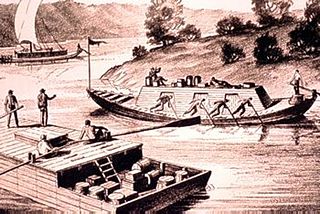 W
WA keelboat is a riverine cargo-capable working boat, or a small- to mid-sized recreational sailing yacht. The boats in the first category have shallow structural keels, and are nearly flat-bottomed and often used leeboards if forced in open water, while modern recreational keelboats have prominent fixed fin keels, and considerable draft. The two terms may draw from cognate words with different final meaning.
 W
WLady Washington is a ship name shared by at least four different 80-100 ton-class Sloop-of-war and merchant sailing vessels during two different time periods. The original sailed during the American Revolutionary War and harassed British shipping. Post war, the vessel was used as a merchant trading vessel in the Pacific. A somewhat updated modern replica was created in 1989. The replica has appeared in numerous films and television shows, standing in as other real or fictional ships.
 W
WLewis and Clark's keelboat was built as a galley in Pittsburgh in 1803 for the Lewis and Clark Expedition, after detailed specifications by Meriwether Lewis. A keelboat, it could be propelled by oars, sails, poles and towlines. The boat was the expedition's main vessel until the spring of 1805, when it was returned to Saint Louis.
 W
WMaryland Dove is a re-creation/replica of Dove, an early 17th-century English trading ship, one of two ships which made up the first expedition from England to the Province of Maryland. The modern Dove was designed by the naval architect and naval historian William A. Baker.
 W
WMirny was a 20-gun sloop-of-war of the Imperial Russian Navy, the second ship of the First Russian Antarctic Expedition in 1819–1821, during which Fabian Gottlieb von Bellingshausen and Mikhail Lazarev circumnavigated the globe, discovered the continent of Antarctica and twice circumnavigated it, and discovered a number of islands and archipelagos in the Southern Ocean and the Pacific.
 W
WLa Niña was one of the three Spanish ships used by Genoan explorer Christopher Columbus in his first voyage to the West Indies in 1492. As was tradition for Spanish ships of the day, she bore a female saint's name, Santa Clara. However, she was commonly referred to by her nickname, La Niña, which was probably a pun on the name of her owner, Juan Niño of Moguer. She was a standard caravel-type vessel.
 W
WSMS Novara was a sail frigate of the Austro-Hungarian Navy most noted for sailing the globe for the Novara Expedition of 1857–1859 and, later for carrying Archduke Maximilian and wife Carlota to Veracruz in May 1864 to become Emperor and Empress of Mexico.
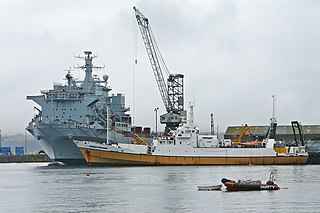 W
WThe R/V Odyssey Explorer was a salvage and recovery vessel owned by Odyssey Marine Exploration. It was sold in 2016 and renamed Empire Persia by the Latvian business conglomerate which purchased the vessel.
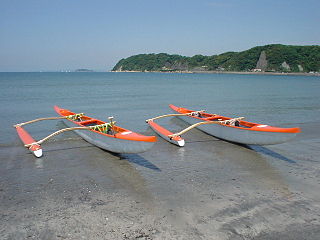 W
WOutrigger boats are various watercraft featuring one or more lateral support floats known as outriggers, which are fastened to one or both sides of the main hull. They can range from small dugout canoes to large plank-built vessels. Outrigger boats can also vary in their configuration, from the ancestral double-hull configuration (catamarans), to single-outrigger vessels prevalent in the Pacific Islands and Madagascar, to the double-outrigger vessels (trimarans) prevalent in Island Southeast Asia. They are traditionally fitted with Austronesian sails, like the crab claw sails and tanja sails, but in modern times are often fitted with petrol engines.
 W
WPadewakang were traditional boats used by the Bugis, Mandar, and Makassar people of South Sulawesi. Padewakang were used for long distance voyages serving the south Sulawesi kingdoms.
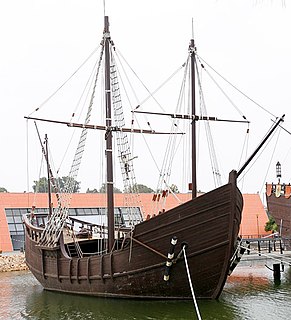 W
WLa Pinta was the fastest of the three ships used by Christopher Columbus in his first transatlantic voyage in 1492. The New World was first sighted by Rodrigo de Triana aboard La Pinta on 12 October 1492. The owner of La Pinta was Cristóbal Quintero. The Quintero brothers were ship owners from Palos. The owner of the ship allowed Martín Alonso Pinzón to take over the ship so he could keep an eye on the ship.
 W
WRV Polarstern is a German research icebreaker of the Alfred Wegener Institute for Polar and Marine Research (AWI) in Bremerhaven, Germany. Polarstern was built by Howaldtswerke-Deutsche Werft in Kiel and Nobiskrug in Rendsburg, was commissioned in 1982, and is mainly used for research in the Arctic and Antarctica. The ship has a length of 118 metres and is a double-hulled icebreaker. She is operational at temperatures as low as −50 °C (−58 °F) Polarstern can break through ice 1.5 m thick at a speed of 5 knots. Thicker ice up to 3 m (9.8 ft) thick can be broken by ramming.
 W
WPourquoi Pas ? IV was the fourth ship built for Jean-Baptiste Charcot, which completed the second Charcot expedition of the Antarctic regions from 1908 to 1910. Charcot died aboard when the ship was wrecked on 16 September 1936, off the coast of Iceland. Of the forty men on board, only one survived.
 W
WThe Recherche was a 20-gun Marsouin-class scow of the French Navy, later reclassified as a 12-gun frigate. She earned fame as one of the ships of Bruni d'Entrecasteaux' expedition, along with Espérance. Recherche Bay in Tasmania was named after her.
 W
WHMS Roebuck was a fifth-rate warship in the Royal Navy which, under the command of William Dampier, carried the first British scientific expedition to Australia in 1699. The wreck of the ship has since been located by a team from the Western Australian Maritime Museum at a site on the coast of Ascension Island where it foundered more than 300 years ago.
 W
WRCMPV St. Roch is a Royal Canadian Mounted Police schooner, the first ship to completely circumnavigate North America, and the second vessel to transit the Northwest Passage. She was the first ship to complete the Northwest Passage in the direction west to east, going the same route that Amundsen on the sailing vessel Gjøa went east to west, 38 years earlier.
 W
WSakman, better known in western sources as flying proas, are traditional sailing outrigger boats of the Chamorro people of the Northern Marianas. They are characterized by a single outrigger and a crab claw sail. They are the largest native sailing ships (ladjak) of the Chamorro people. Followed by the slightly smaller lelek and the medium-sized duding. They are similar to other traditional sailing ships of Micronesia, like the wa, baurua, and the walap. These ships were once used for trade and transportation between islands.
 W
WLa Santa María, alternatively La Gallega, was the largest of the three ships used by Christopher Columbus in his first voyage across the Atlantic Ocean in 1492, the others being the Niña and the Pinta. Her master and owner was Juan de la Cosa, a man from Santoña, Cantabria, operating in south Spanish waters. Requisitioned by order of Queen Isabella and by contract with Christopher Columbus, whom de la Cosa knew previously, the Santa Maria became Columbus' flagship on the voyage as long as it was afloat. Having gone aground on Christmas Day, 1492, on the shores of Haiti, through inexperience of the helmsman, it was partially dismantled to obtain timbers for Fort Navidad, "Christmas Fort," placed in a native Taíno village. The fort was the first Spanish settlement in the New World, which Columbus had claimed for Spain. He thus regarded the wreck as providential. The hull remained where it was, the subject of much modern wreck-hunting without successful conclusion.
 W
WSão Gabriel was the flagship of Vasco da Gama's armada on his first voyage to India in 1497–1499.
 W
WSōya (宗谷) is a Japanese icebreaker that serves as a museum ship in Tokyo after a long and storied service spanning some of the 20th century's historic events. It is named for Sōya Subprefecture in Hokkaido.
 W
WThe square-rigged caravel, was a sailing ship created by the Portuguese in the second half of the fifteenth century. A much larger version of the caravel, its use was most notorious beginning in the end of that century. The square-rigged caravel held a notable role in the Portuguese expansion during the age of discovery, especially in the first half of the sixteenth century, for its exceptional maneuverability and combat capabilities. This ship was also sometimes adopted by other European powers. The hull was galleon-shaped, and some experts consider this vessel a forerunner of the fighting galleon, by the name of caravela de armada.
 W
WThe Ark was a 400-ton English merchant ship hired in 1633 by Cecil Calvert, 2nd Baron Baltimore to bring roughly 140 English colonists and their equipment and supplies to the new colony and Province of Maryland, one of the original thirteen colonies of British North America on the Atlantic Ocean eastern seaboard. On the historic trans-oceanic voyage from England in late 1633 and early 1634, The Ark was accompanied by the smaller 40-ton pinnace Dove.
 W
WA Chinese treasure ship was a type of large wooden ship in the fleet of admiral Zheng He, who led seven voyages during the early 15th-century Ming dynasty.
 W
WSS Vega was a Swedish barque, built in Bremerhaven, Germany in 1872. The Vega was the first ship to complete a voyage through the Northeast Passage, and the first vessel to circumnavigate the Eurasian continent, during the Vega expedition. Initially a troubled enterprise, the successful expedition is considered to be among the highest achievements in the history of Swedish science.
 W
WVictoria was a carrack and the first ship to successfully circumnavigate the world. Victoria was part of a Spanish expedition commanded by the explorer Ferdinand Magellan, and after his death during the voyage, by Juan Sebastián Elcano. The expedition began on 10 August 1519 with five ships. However, Victoria was the only ship to complete the voyage, returning on 6 September 1522. Magellan was killed in the Philippines.
 W
WUSS Vincennes (1826) was a 703-ton Boston-class sloop of war in the United States Navy from 1826 to 1865. During her service, Vincennes patrolled the Pacific, explored the Antarctic, and blockaded the Confederate Gulf coast in the Civil War. Named for the Revolutionary War Battle of Vincennes, she was the first U.S. warship to circumnavigate the globe.
 W
WThe vinta is a traditional outrigger boat from the Philippine island of Mindanao. The boats are made by Sama-Bajau, Tausug and Yakan peoples living in the Sulu Archipelago, Zamboanga peninsula, and southern Mindanao. Vinta are characterized by their colorful rectangular lug sails (bukay) and bifurcated prows and sterns, which resemble the gaping mouth of a crocodile. Vinta are used as fishing vessels, cargo ships, and houseboats. Smaller undecorated versions of the vinta used for fishing are known as tondaan.
 W
WVostok was a 28-gun sloop-of-war of the Imperial Russian Navy, the lead ship of the First Russian Antarctic Expedition in 1819–1821, during which Fabian Gottlieb von Bellingshausen and Mikhail Lazarev circumnavigated the globe, discovered the continent of Antarctica and twice circumnavigated it, and discovered a number of islands and archipelagos in the Southern Ocean and the Pacific.
 W
WThe voyage of the James Caird was a journey of 1,300 kilometres (800 mi) from Elephant Island in the South Shetland Islands through the Southern Ocean to South Georgia, undertaken by Sir Ernest Shackleton and five companions to obtain rescue for the main body of the stranded Imperial Trans-Antarctic Expedition of 1914–1917. Polar historians regard the voyage of the crew in a 22.5' lifeboat through the "Furious Fifties" as one of the greatest small-boat journeys ever completed.
 W
WWa are traditional sailing outrigger canoes of the Caroline Islands. They have a single outrigger. They are similar to the sakman of the Northern Marianas.